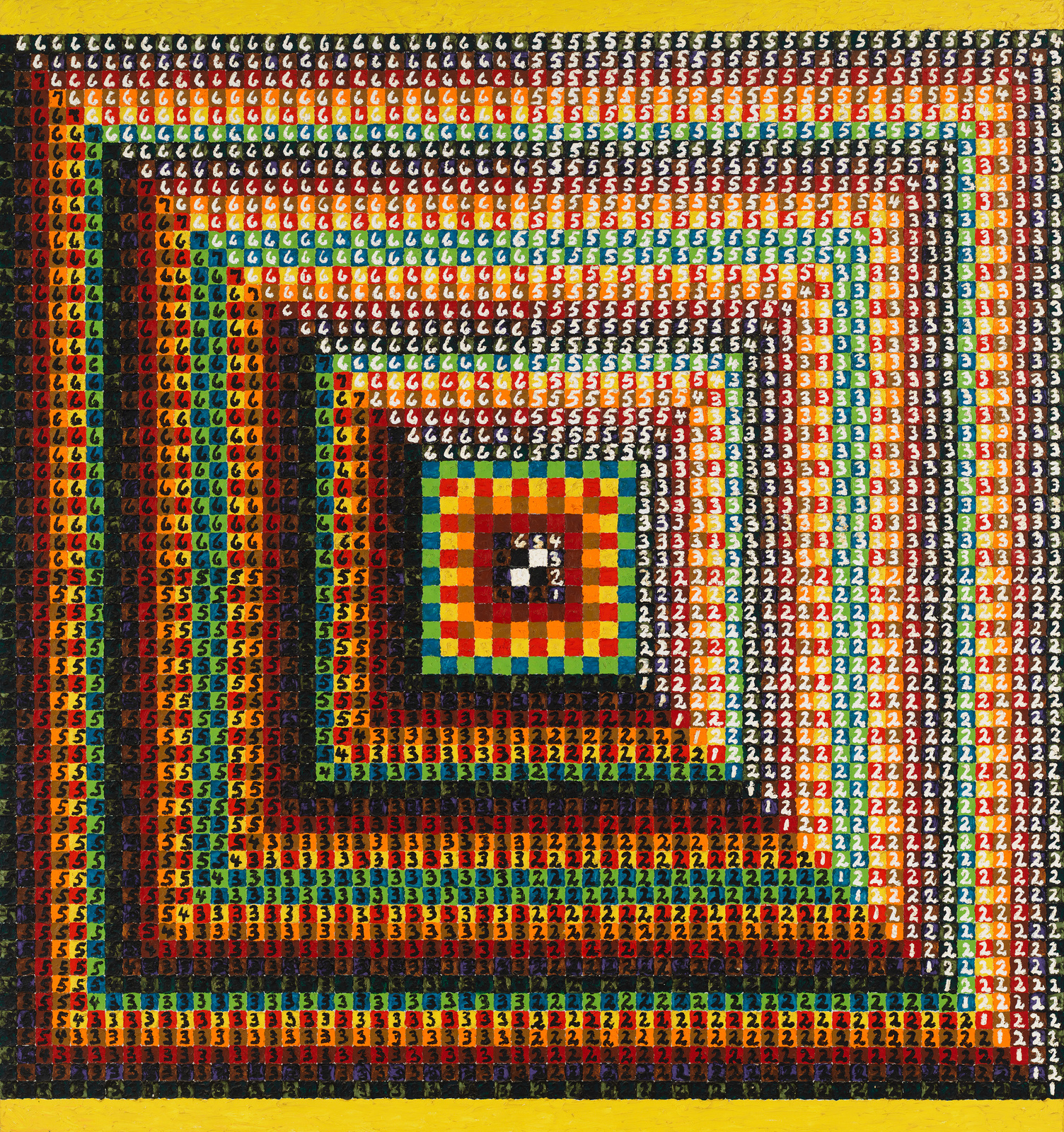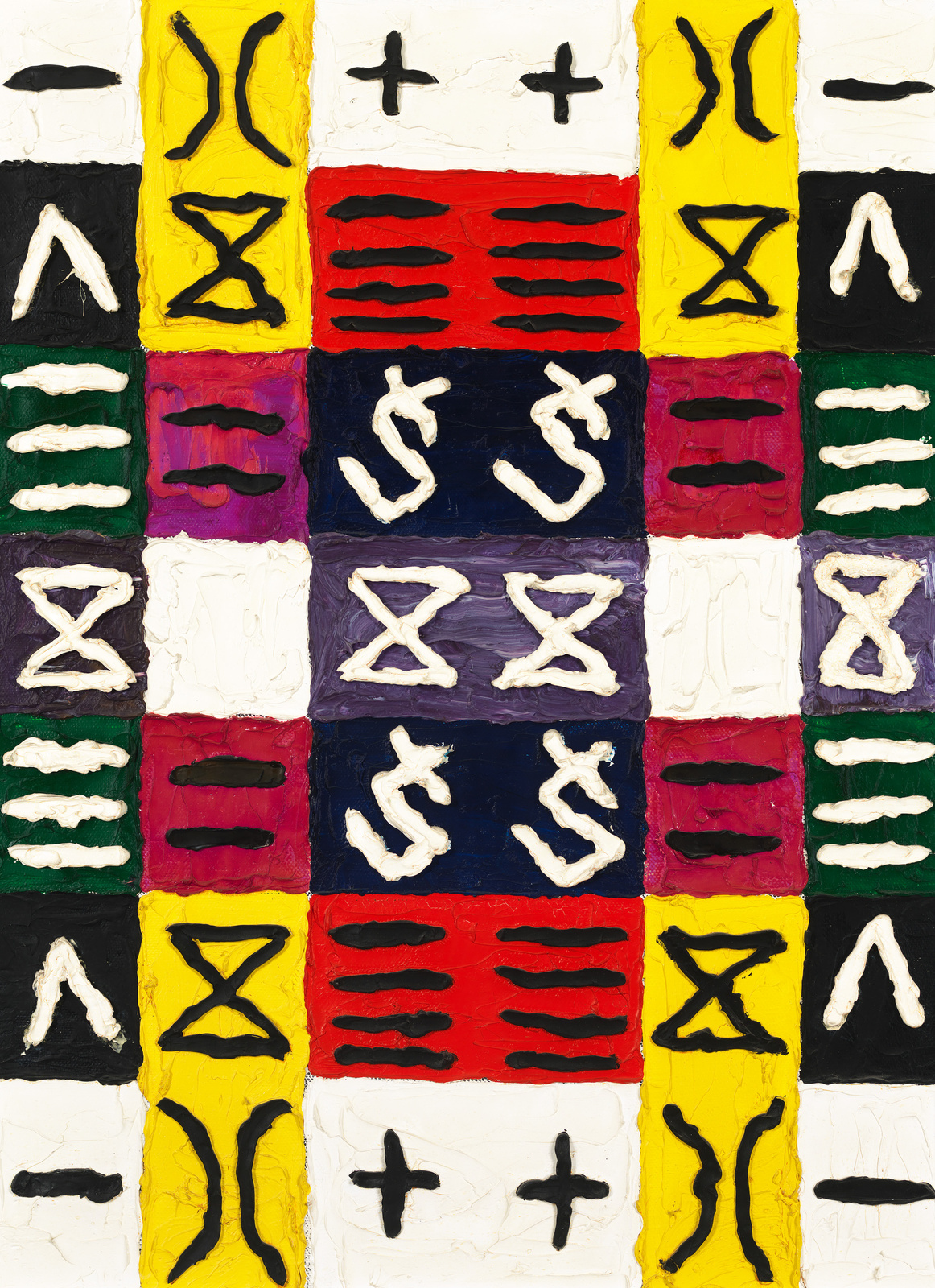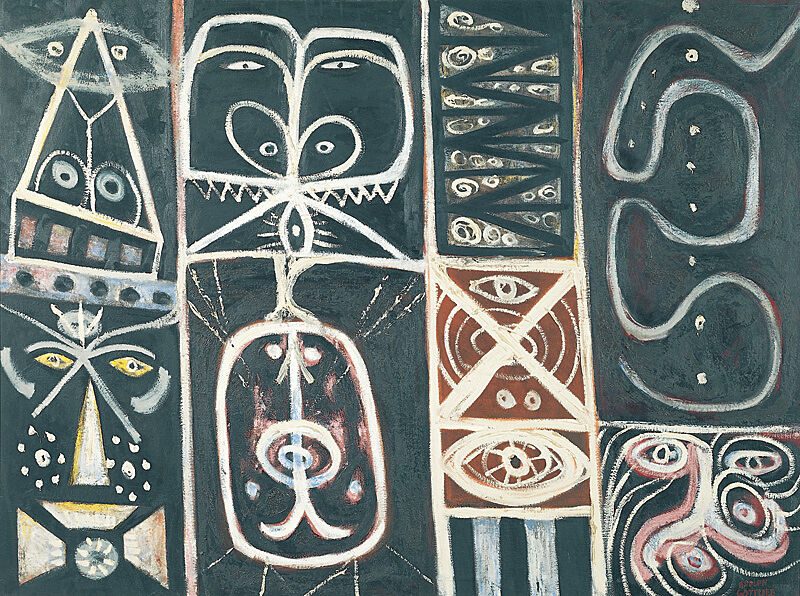Alfred Jensen, A Perfect Equal Area I, 1960
July 10, 2012
0:00
Alfred Jensen, A Perfect Equal Area I, 1960
0:00
Narrator: The painter Willem de Kooning once said that oil paint—rich and touchable as it is—existed to paint flesh. In paintings like this one, Alfred Jensen seems to have made a much less likely proposal: that it exists to work out systems of thought. Jensen’s paint is thick, and his color is incredibly brilliant. He applied the paint to his canvas straight out of the tube, and then spread it with a palette knife. Because the oil paint is translucent and because Jensen didn’t smooth the surfaces, this practice means that the painting is covered in reflective bumps and ridges. Together with Jensen’s brightly contrasting colors, this shiny texture animates the surface.
To organize the surface, Jensen used systems drawn from Arabic, Mayan, Chinese, and other ancient numerical systems. He also set up a series of dualities: black and white, primary colors against their complements, warm against cool. He mirrored, repeated, and transposed forms. He never worked out these systems in advance, but figured them out in the process of diagramming them. For Jensen—a truly international person who was born in Guatemala, moved all over Europe, and ended up in the United States—these systems became, among other things, a way to symbolically understand the universe through other civilizations’ cultures.
In Signs & Symbols.



